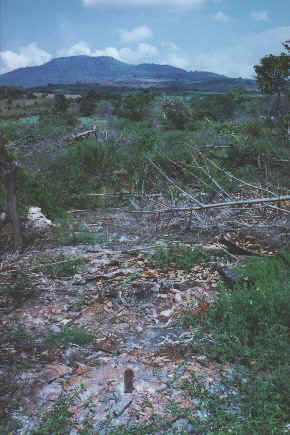 The remains of a house burned down by the police in Los Chorros de Varal.
The remains of a house burned down by the police in Los Chorros de Varal. The remains of a house burned down by the police in Los Chorros de Varal.
The remains of a house burned down by the police in Los Chorros de Varal.
Even in the depressed conditions of the 1990s, cane land remained valuable. The small village of Los Chorros de Varal, deep in the heart of the cane growing area attached to the San Sebastian mill, some twenty miles along a dirt road away from the town of Los Reyes, was founded early in the 1950s and appears on official maps as a community. Nevertheless, its inhabitants were regarded with hostility by the members of the neighbouring ejido, whose leaders enjoyed cordial relations with a group of cattle men and ranchers who had supposedly bought the land from legal owners belonging to the larger village to which the ejido was attached in 1981. They also owned the picnic area from which the place derives its name: a spectacular waterfall in a deep ravine reached by precipitous flight of steps and a ramshackle walkway suspended on rusting cables. These ranchers were were led by a group of priísta caciques with considerable political clout in the state capital, José Mendoza Chávez, Antonio Alvarez Ceja and Antonio Alvarez Espinosa.
Despite the opposition of the ranchers, the people of the Los Chorros hamlet secured a Presidential resolution for the restitution to them of communal land, early in 1990. This effectively declared the earlier sale illegal. In April, they complained to the state authorities that they had received threats from the present proprietors, backed up by hired gunmen. In July, the state Judicial Police arrived, burned down their houses, destroyed their fruit trees and killed their animals, leaving women and children exposed to the chill of the rains without shelter. The police also shot up the primary school which had been constructed through the good offices of the perredista mayor of Los Reyes, Francisco Lunar, leaving it unusable.
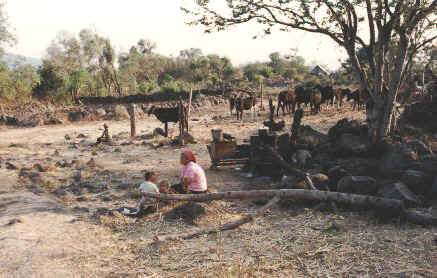 The police killed the animals in addition to destroying the houses, and left women and children without shelter at the height of the rains.
The police killed the animals in addition to destroying the houses, and left women and children without shelter at the height of the rains.
Although the settlement was now declared legally "inexistent", with forty years of occupation behind them, the comuneros were determined to return, doing so six months later, only to face new threats from the caciques' gunmen and a second eviction, which resulted in the imprisonment of community leaders, on the February 23rd 1991. With the support of the UCEZ, they brought their case to the attention of the people of Los Reyes in a dramatic manner by piling up what remained of their homes and possessions in the main square of the town and insisting that they would not be moved until they received justice.
Since the local PRD administration was clearly not going to move them, and public sympathy had been gained by the manner of their eviction and, in particular, the violence of the police and gunmen towards women and small children, the interim PRI governor in Morelia, Genovevo Figueroa, deemed it prudent to allow them to rebuild their community and to recognize their rights to land for dwellings (though not to the disputed farm land). Even accomplishing this proved difficult, as the ranchers tried to oppose the police operation to restore the villagers to possession of their terrain, abusing the officer in charge on the grounds that he had been on their payroll at the time of the original evictions. But they judged it prudent to accede to the governor's will. The dispute over the farm land remains one of many thousands of unresolved agrarian conflicts which remain to be definitively settled despite the amendment of Article 27.
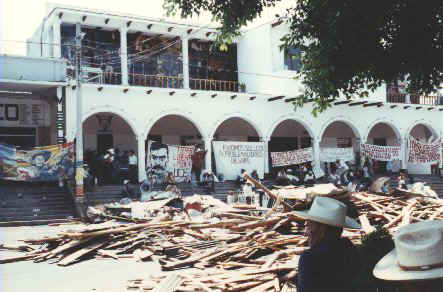
The Unión de Comuneros "Emiliano Zapata" organizes a protest in the main square of Los Reyes, with the remains of the village dumped in front of the town hall.
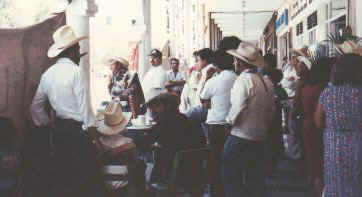
The rally is addressed by the charismatic UCEZ leader Efren Capiz, a self-taught lawyer who offers his services without charge and has created a special blend of leftist and indigenous rights politics in arguing that poor Mexicans need to realize that they are all of indigenous stock and reimagine their identities. Don Efren himself adopts an "Indian" cultural persona, but his movement has recruited many mestizo peasants and was also supporting the land claims of landless cane workers in Santa Clara.
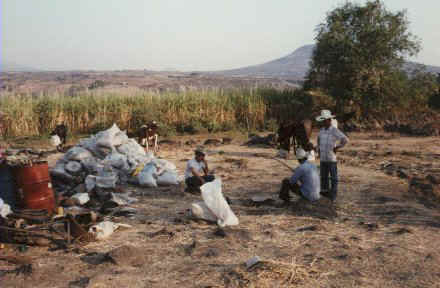
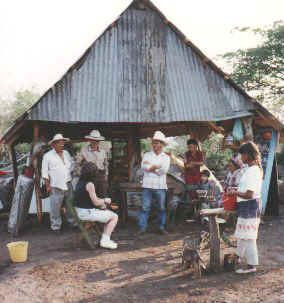
As a result of the protest, the people were able to reoccupy their village and rebuild their houses.